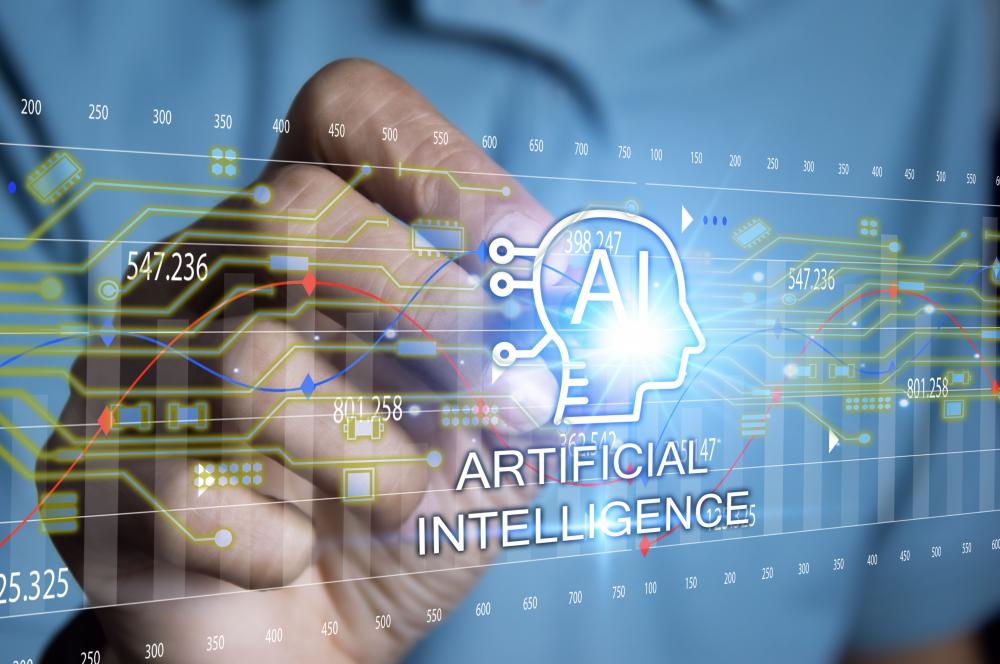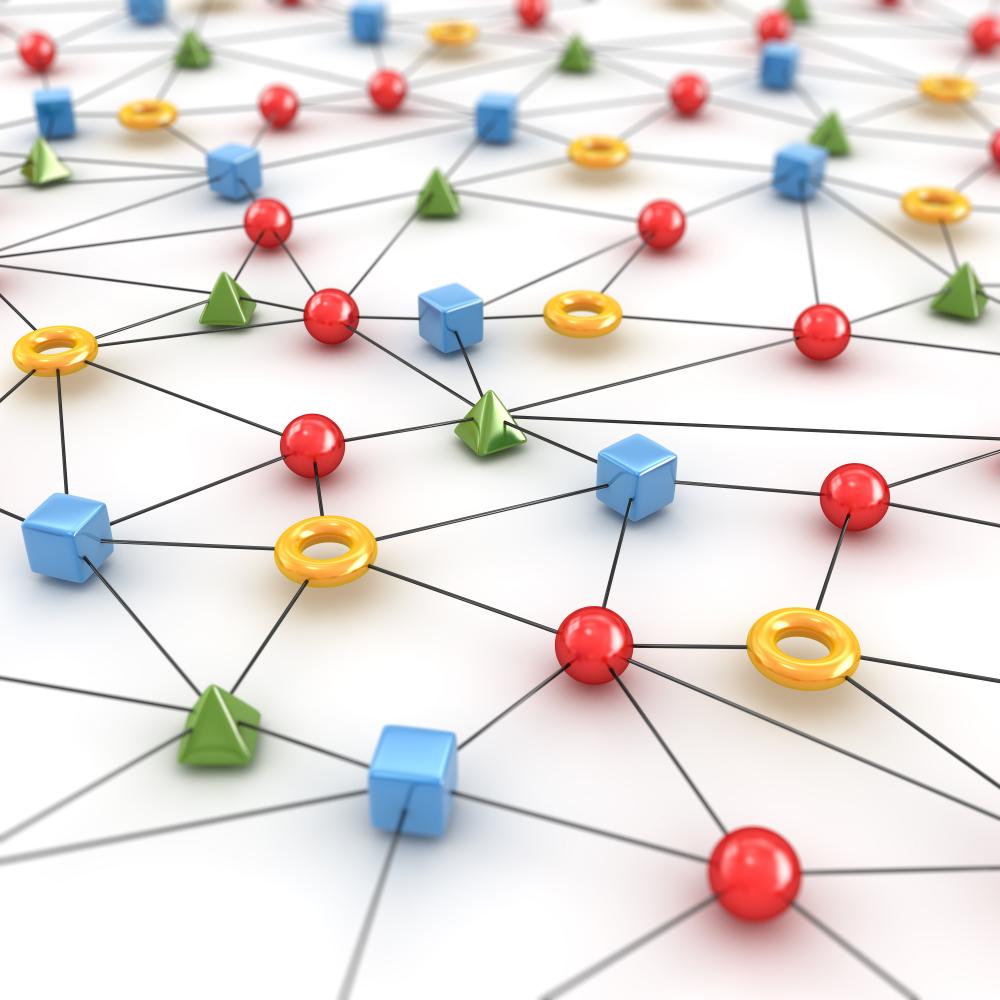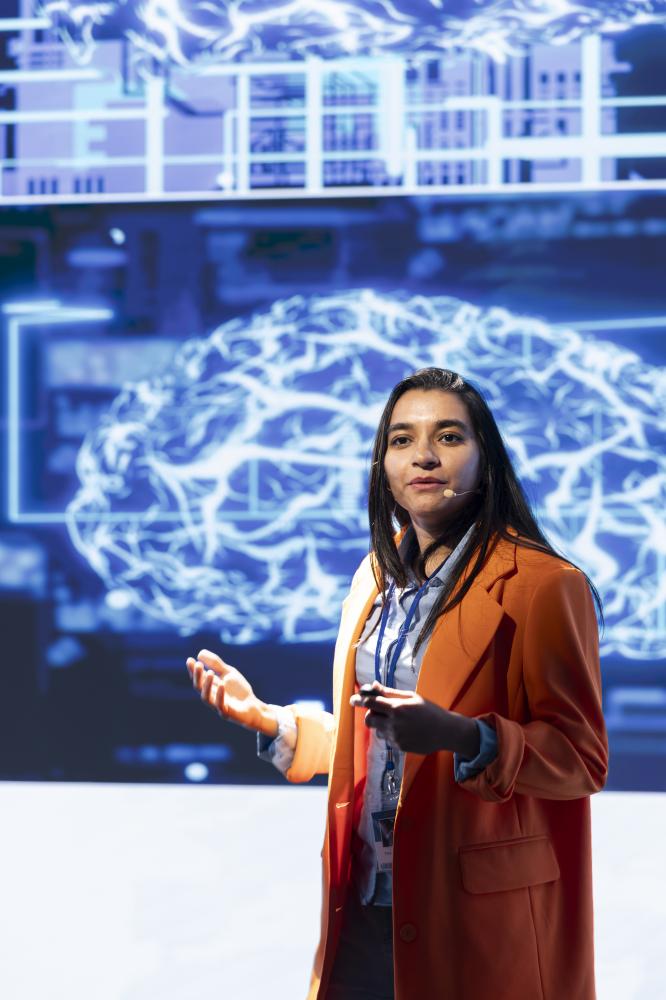
The Synergy of Web3 and Artificial Intelligence
The convergence of Web3 and Artificial Intelligence is reshaping the digital landscape. By integrating decentralized technology with intelligent algorithms, we create a more secure and transparent environment. At #Space, we leverage this synergy to empower our community. Through blockchain, data integrity is enhanced, essential for building reliable AI models. This fusion not only democratizes access but also ensures equitable resource distribution. Our focus is on decentralization and privacy, key elements in the evolution of Web3 and Artificial Intelligence.
Web3's decentralized nature tackles crucial privacy issues, a growing concern in AI's centralized systems. By utilizing blockchain, we provide secure data storage across networks, mitigating unauthorized access risks. This assurance allows us to innovate while protecting user information. Web3 and Artificial Intelligence work hand in hand to redefine security standards.
Enhancing Digital Interaction Through Decentralization
Web3 and Artificial Intelligence together foster enhanced digital interactions. At #Space, decentralization offers users true ownership of their digital identity. Decentralized AI models distribute decision-making across networks, minimizing bias and enhancing transparency. This democratization aligns with our mission to empower individuals online.
Integrating tokenization, we incentivize data sharing, crucial for AI's learning processes. Users can earn rewards by contributing data, creating a sustainable ecosystem. This collaboration between Web3 and Artificial Intelligence provides mutual benefits, aligning user interests with AI development. Decentralized interactions are the future of digital ecosystems.
Impact on Industries
Web3 and Artificial Intelligence are revolutionizing various sectors. Our services at #Space reflect this transformative potential. In healthcare, decentralized systems ensure secure patient data management, enhanced by AI-driven insights. This integration supports personalized treatment paths and predictive analytics.
The financial sector benefits as well, with blockchains ensuring transparent transactions. AI algorithms offer personalized advice, while decentralized frameworks boost trust. By combining these technologies, we pave the way for innovation and efficiency.
Supply chain management also stands to gain from Web3 and Artificial Intelligence advancements. Blockchain tracks product origins, while AI predicts demand and optimizes logistics. Our vision at #Space is clear: to redefine industry standards through technological integration.
Engaging the Community
Community engagement is vital in the Web3 and Artificial Intelligence space. At #Space, participation in our ecosystem is encouraged through initiatives like strategic keyword staking and affiliate programs. Rewards create motivation and foster active involvement in digital transformation.
Our social features, such as Dreaming and Hashbang messaging, facilitate collaboration. These tools, powered by blockchain, ensure secure communications and collaboration opportunities. By leveraging $SPACE coin, users enjoy a suite of features designed to enhance their experience.
Engagement extends beyond tools. Our newsletters and updates provide the latest insights into emerging technologies, keeping users informed and empowered. Together, we navigate the evolving world of Web3 and Artificial Intelligence, shaping a brighter future for all.

Decentralized Applications and Their Importance
At #Space, we believe Decentralized Applications revolutionize digital experiences. They're built on blockchain, ensuring data integrity and user autonomy. Decentralized Applications eliminate intermediaries, reducing costs and enhancing privacy. Their decentralized nature offers unparalleled security, making them resistant to censorship. This aligns with our mission to promote freedom of speech and secure online interactions through innovative Web3 solutions.
Decentralized Applications have transformative impacts across industries. From finance to community engagement, they're reshaping how the digital economy functions. Empowering the unbanked, they ensure financial inclusion and equitable access to services. At #Space, our commitment to decentralization ensures that every stakeholder thrives in the evolving digital landscape.
Unique Features of Decentralized Applications
Decentralized Applications leverage blockchain's cryptographic strengths, providing enhanced security. At #Space, we appreciate how this technology safeguards user data and ensures transactional transparency. By operating on distributed networks, Decentralized Applications prevent single points of failure. This resilience is crucial for creating a secure Web3 environment, which we strive to achieve through our services.
Interoperability is another standout feature. Decentralized Applications integrate seamlessly with other services, creating collaborative ecosystems. This is vital for our Web3 initiatives at #Space, enabling features like Dreaming for secure collaborations. Our focus on interoperability ensures users benefit from efficient and innovative digital interactions.
The transparency offered by Decentralized Applications is unmatched. By recording transactions on immutable ledgers, they enhance trust and accountability. At #Space, this transparency supports our advocacy for censorship resistance and freedom of information. It provides users with confidence in their digital engagements, aligning with our ethos of empowering individuals through secure digital solutions.
Role of Decentralized Applications in Web3
Decentralized Applications are central to the Web3 movement, driving a fundamental shift in how digital economies operate. At #Space, we recognize their potential to redefine domain ownership and digital identity management. These applications empower users to control their online presence, a core aspect of our mission.
In the Web3 space, Decentralized Applications offer opportunities for passive income generation. At #Space, we support users in leveraging these features through strategic keyword and pool staking. Our vibrant affiliate programs maximize the potential of Decentralized Applications, creating new marketing and crypto opportunities.
Decentralized governance is another critical aspect of these applications. They enable community-driven decision-making, ensuring democratic processes in digital interactions. This aligns with our focus on community engagement and user empowerment, fostering a participatory ecosystem that benefits all stakeholders.
Future Prospects of Decentralized Applications
The potential of Decentralized Applications continues to grow, sparking innovation across various sectors. At #Space, we are committed to staying at the forefront of these developments. As these applications evolve, they offer new solutions for challenges in privacy, security, and user autonomy.
We foresee Decentralized Applications playing a significant role in mainstream adoption of blockchain technology. Their ability to provide secure and efficient services makes them appealing for businesses and individuals alike. At #Space, our ongoing updates and blogs explore these trends, offering insights into emerging technologies and their impact on digital interactions.
With an increasing focus on decentralized finance, Decentralized Applications are set to revolutionize financial services. At #Space, we are positioned to harness these opportunities, empowering users with tools for a secure and decentralized digital economy. Our vision for the future includes continued innovation and support for the growth of Decentralized Applications in Web3.
As Decentralized Applications become more integrated into daily life, their advantages over centralized systems become evident. By minimizing risks and offering customizable experiences, they align perfectly with #Space's goals of creating a decentralized and secure environment for all users.
The Basics of Machine Learning Algorithms
At #Space, we embrace the cutting-edge world of Machine Learning Algorithms to enhance our Web3 solutions. Understanding the basics is crucial, as these algorithms are pivotal in automating tasks. They identify patterns in massive data sets, enabling machines to learn from data inputs without explicit programming. This innovation marks a new era of digital interaction.
Machine Learning Algorithms are categorized into supervised, unsupervised, and reinforcement learning. Supervised learning is akin to learning with a teacher, providing a known dataset with input-output pairs for training. In contrast, unsupervised learning allows the algorithm to explore data independently, identifying hidden patterns. Meanwhile, reinforcement learning enables machines to learn through trial and error, optimizing actions within a set of rules.
Supervised Learning Methods
Supervised learning stands at the forefront of Machine Learning Algorithms. It’s widely utilized in applications requiring precise predictions based on historical data. These algorithms use labeled datasets to understand the relationship between input features and the output target, making them invaluable for classification and regression tasks.
Classification tasks involve predicting categorical outcomes, such as email spam detection. Algorithms like Decision Trees and Naive Bayes are commonly employed here. Conversely, regression tasks, such as linear regression, predict continuous values. These methods are essential in industries like finance, where accurate forecasting drives business decisions.
Our experience at #Space shows that selecting the right algorithm hinges on the problem’s complexity, the volume of data, and the desired outcome. Each algorithm offers distinct advantages, so understanding their nuances is vital for success in the digital economy.
Unsupervised Learning Techniques
Unsupervised learning provides a fascinating contrast to supervised methods. Here, the data is unlabeled, allowing Machine Learning Algorithms to self-organize to identify patterns. This technique is instrumental in clustering, where data is grouped into subsets. K-means is a popular algorithm used to identify natural clusters in data, providing meaningful insights into customer segmentation and market trends.
Dimensionality reduction is another unsupervised method aimed at simplifying data without losing valuable information. Principal Component Analysis (PCA) is a well-known algorithm in this domain. It reduces noise and focuses on significant variables, essential for processing high-dimensional data prevalent in modern digital systems.
Exploring these techniques can unveil hidden connections in data—a vital asset for businesses aiming to stay ahead in a competitive market. At #Space, we leverage these insights to enhance Web3 functionalities, driving innovation in digital identity management and domain ownership.
Reinforcement Learning in Action
Reinforcement learning represents an exciting frontier for Machine Learning Algorithms. By simulating a reward-based system, these algorithms learn optimal strategies through interaction with their environment. It’s akin to training a dog with treats, where correct actions lead to rewards, and mistakes yield corrections.
This approach is particularly effective in dynamic environments such as gaming or autonomous driving. The algorithm constantly evolves, learning the best courses of action over time. For Web3 environments, this adaptive learning is crucial, as it allows platforms like #Space to remain agile and responsive to user behaviors.
Our commitment to decentralization and user engagement is strengthened by reinforcement learning. This technology enhances our ecosystem, ensuring secure and efficient operations in the ever-evolving digital landscape.
Choosing the Right Algorithm
Selecting the most appropriate Machine Learning Algorithms is both an art and a science. It requires balancing data size, complexity, and the specific problem at hand. Experimentation is key, as the optimal algorithm may not be evident at the outset. At #Space, we prioritize adaptability and innovation, tailoring our solutions to meet unique user needs.
It's essential to consider factors such as accuracy, interpretability, and computational cost. Some algorithms, like random forests, offer excellent prediction accuracy but may require more computational resources. Others, like linear regression, provide simplicity and speed with straightforward interpretability.
Ultimately, the goal is to derive actionable insights that drive business growth and enhance user experiences. As we continue to innovate, our focus remains on empowering stakeholders through advanced digital interactions within the decentralized Web3 landscape.

How is AI used in Web3?
In the world of Web3, AI serves as a powerful tool for enhancing digital interactions and improving user experiences. At #Space, we integrate AI to analyze data across decentralized networks, which helps optimize content delivery and enhance user engagement. Imagine you're navigating your digital space with a personal assistant that learns from your interactions and tailors recommendations to your preferences—this is AI at work in Web3.
Moreover, AI improves decision-making by distributing processes across blockchain networks, reducing bias, and enhancing transparency. Through this synergy, AI helps automate routine tasks, streamline operations, and create more personalized digital experiences. Our approach at #Space ensures that users benefit from these advancements, enjoying an ecosystem where AI supports seamless digital interactions without compromising privacy. How do you envision AI impacting the future of your digital interactions?
Can AI replace Web3 developers?
While AI can automate certain tasks and processes, it cannot fully replace Web3 developers. The creativity, problem-solving, and decision-making skills of human developers remain crucial, especially as Web3 is built on principles of decentralization and innovation. AI serves as a complement to developers by handling repetitive or data-intensive tasks, allowing developers to focus on strategic planning and creative solutions.
At #Space, we see AI as an augmentation tool that enhances the capabilities of our development teams. For instance, AI can assist in code generation or bug detection, but the vision and adaptability of developers are irreplaceable. In fact, the collaboration between AI and developers often leads to improved efficiency and innovation in Web3 projects. This relationship raises an intriguing question: How can AI further enhance the creative capabilities of Web3 developers?
What is the difference between generative AI and Web3?
Generative AI and Web3 are distinct concepts, each with unique functions and purposes. Generative AI focuses on creating new content by learning from existing data; it's like an artist inspired by a multitude of canvases, crafting something entirely original. This technology underpins applications like language models and image generation tools, producing outputs in various media forms.
In contrast, Web3 represents the next evolution of the internet, focusing on decentralization, user empowerment, and enhanced privacy. It enables individuals to own their digital identities and assets without relying on centralized entities. At #Space, we blend the benefits of both technologies—using generative AI to improve user-generated content and Web3 to decentralize data ownership and streamline digital interactions. What innovative applications do you foresee combining these technologies?
What is the intersection of AI and Web3?
The intersection of AI and Web3 lies in their shared potential to transform digital ecosystems. Together, they create environments that are both user-centric and secure. AI enhances data analysis and personalization in Web3 networks, while blockchain technology ensures data integrity and privacy. Imagine a world where your interactions help train AI models, contributing to a decentralized knowledge base that democratizes access to information—this is where AI and Web3 converge.
At #Space, we harness this intersection to offer services that prioritize user empowerment and innovation. Whether it's through AI-driven insights for content optimization or blockchain-based privacy enhancements, we see this synergy as pivotal to the future of digital interactions. What other collaborative opportunities between AI and Web3 do you think could shape our digital future?
What are Decentralized Applications (DApps)?
Decentralized Applications, or DApps, are software applications that run on a blockchain network, offering the benefits of decentralization, such as enhanced security and user autonomy. At #Space, we believe DApps revolutionize digital experiences by eliminating intermediaries, reducing costs, and ensuring data integrity. For instance, imagine a digital marketplace where users can buy and sell directly without middlemen, enhancing transaction speed and security.
These applications operate across distributed networks, preventing single points of failure and censorship. They empower users with control over their data and online identities, aligning perfectly with our mission to promote freedom and privacy on the Web3. As we continue to innovate, DApps will play a crucial role in creating a decentralized online ecosystem. How do you see DApps transforming the industries you interact with daily?
How does Machine Learning fit into Web3?
Machine Learning (ML) plays an integral role in Web3 by enhancing the analytical capabilities of decentralized networks. At #Space, we utilize ML algorithms to sift through large datasets, identify patterns, and optimize user experiences in a privacy-conscious manner. For example, ML can help personalize content delivery by learning from user behavior, thus improving engagement without compromising personal data.
Furthermore, ML algorithms can aid in predictive analytics, allowing businesses to foresee trends and adapt strategies accordingly. The synergy between ML and Web3 not only democratizes access to information but also ensures equitable distribution of resources. As these technologies continue to evolve, they present unprecedented opportunities for innovation and efficiency. How might ML shape your experience in the digital economy of the future?
Resources
- National Institute of Standards and Technology (NIST) – NIST provides information on blockchain technology standards and guidelines to enhance cybersecurity and data privacy.
- National Science Foundation (NSF) – The NSF supports research and education in AI and blockchain technologies, focusing on innovation and advancement in digital interactions.
- Defense Advanced Research Projects Agency (DARPA) – DARPA's research programs explore the intersection of AI and blockchain to develop cutting-edge defense and security technologies.
- World Wide Web Consortium (W3C) – W3C develops open standards to ensure the long-term growth of the Web, including guidelines for Web3 technologies and decentralized applications.
- U.S. Equal Employment Opportunity Commission (EEOC) – The EEOC offers resources on AI bias and fairness, important considerations in the development and deployment of AI technologies.
